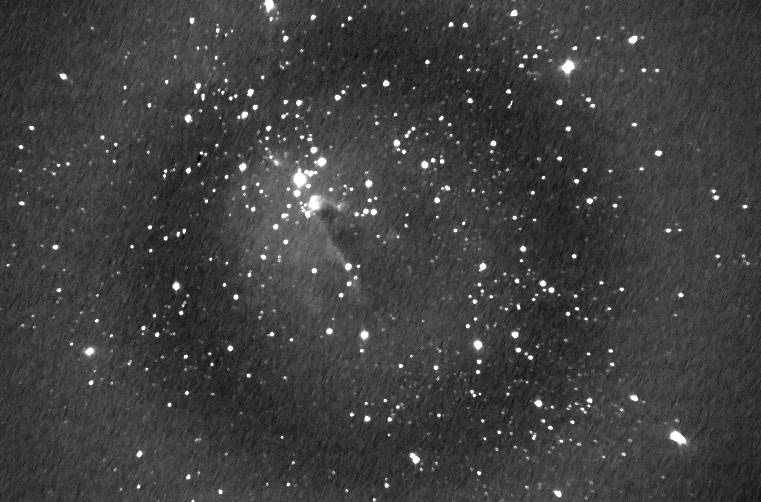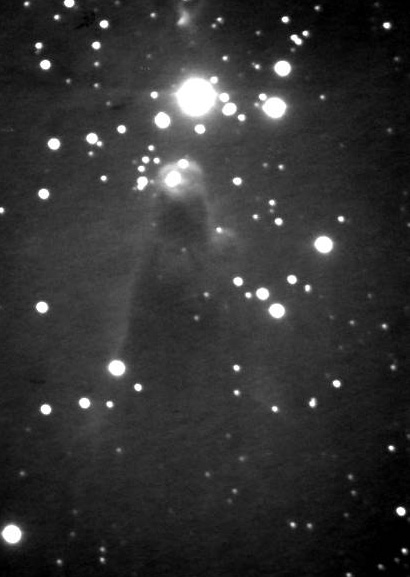The Cone Nebula
The Cone Nebula is a dark region in the southern part of the bright emission nebula NGC 2264. The Cone, so named because of its shape, is obscuring part of the faint emission nebula behind it because its cold molecular hydrogen is dusty. Lying about 2600 light years from Earth, the Cone is about 100 light years in front of the glowing nebula behind, which is being ionized by S Monoceros, the brightest star in the southern part of NGC 2264, (just above the top of the dark cloud in this image) and forming the star on top of the so-called Christmas Tree star cluster, which is upside down in the sky.
 |
| Image taken Feb. 4, 2013 with the C-14 operating at F:3.5 and the ST-8 binned 2 X 2. Exposure was 10 minutes through an H-Alpha filter. The circular appearance of the nebula here is an artifact of the focal reducer and in this case, cannot be eliminated without degrading the contrast and integrity of the Cone itself. |
 |
| Image taken January 15, 2012 with the C-14 operating at F:7 and the ST-8 binned 2X2 - exposure is 60 minutes using T&A of 240 15-second snapshots. |